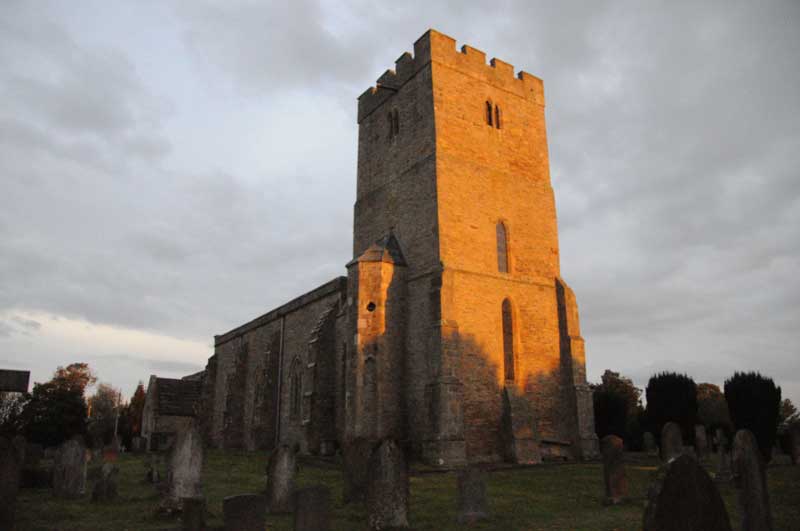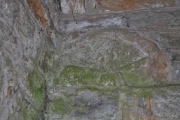<< Our Photo Pages >> Stanwick Crosses - Ancient Cross in England in Yorkshire (North)
Submitted by Anne T on Tuesday, 07 October 2014 Page Views: 3634
Early Medieval (Dark Age)Site Name: Stanwick Crosses Alternative Name: St John The Baptist (Stanwick), Stanwick Viking Ring Cross, Stanwick Saxon CrossCountry: England
NOTE: This site is 0.7 km away from the location you searched for.
County: Yorkshire (North) Type: Ancient Cross
Nearest Town: Richmond (North Yorkshire)
Map Ref: NZ18511198
Latitude: 54.502805N Longitude: 1.715682W
Condition:
| 5 | Perfect |
| 4 | Almost Perfect |
| 3 | Reasonable but with some damage |
| 2 | Ruined but still recognisable as an ancient site |
| 1 | Pretty much destroyed, possibly visible as crop marks |
| 0 | No data. |
| -1 | Completely destroyed |
| 5 | Superb |
| 4 | Good |
| 3 | Ordinary |
| 2 | Not Good |
| 1 | Awful |
| 0 | No data. |
| 5 | Can be driven to, probably with disabled access |
| 4 | Short walk on a footpath |
| 3 | Requiring a bit more of a walk |
| 2 | A long walk |
| 1 | In the middle of nowhere, a nightmare to find |
| 0 | No data. |
| 5 | co-ordinates taken by GPS or official recorded co-ordinates |
| 4 | co-ordinates scaled from a detailed map |
| 3 | co-ordinates scaled from a bad map |
| 2 | co-ordinates of the nearest village |
| 1 | co-ordinates of the nearest town |
| 0 | no data |
Internal Links:
External Links:
I have visited· I would like to visit
Anne T visited on 5th Oct 2014 - their rating: Cond: 4 Amb: 4 Access: 4 Stanwick Crosses, North Yorkshire (St John The Baptist): 8th August 2015, return visit in daylight. As we were passing close by on the way back from Richmond, we decided to pop in to try and see the rest of the stones in relative daylight (there is no electricity in the church - should have thought to take torches). We saw most of the ones in the outer south wall and some of the ones in the south west corner, although I'm still trying to marry up the text and images in the Stanwick Stones book inside the church with the actual stones I photographed. Despite being a glorious summer evening we needed to use the torch app on my husband's phone to try and photograph the Viking Ring Cross in all its glory, and somewhat failed. Hoping for a repeat visit in early September with the flash gun I can slave to the camera.
Original visit: 5th October 2014: We meant to go to St. Cuthbert’s in Forcett, but as I spotted a signpost saying ‘historic church’, husband wrenched the wheel of the car hard left and we drove the 200 yards down the road to end up at St. John the Baptist Church in Stanwick (so much for my map-reading skills!). This was definitely worth coming to – lots of Saxon and Viking remains, but as there were no lights in the church (there were light switches but they didn't function) and it was very definitely dusk. Definitely needs a repeat visit!
The name Stanwick comes from old Norse (‘stein veggr’ meaning stone walls or building). Settlement at Stanwick dates back to the Iron Age, with the original site of habitation at Tofts, the hill just to the south of the church.
In this small hamlet, the present church of St John The Baptist dates from the 13th century, although there is plenty of evidence for earlier Christian presence on this site. Inside the church, under the tower, is a Viking Ring Cross and built into the walls of the porch are two hog-back fragments. The churchyard is roughly circular which suggests a Saxon burial ground and the shaft of a 9th century Anglo Saxon cross sits at the south east corner of the church. The tower, main doorway, part of the chancel and the eastern window in the south aisle are all 13th century.
The church was declared redundant in 1990 and is in the care of the Churches Conservation Trust, although there appear to be occasional services here and there are some recent burials in the churchyard. As well as the Viking and Anglo Saxon crosses, there is an unusual tomb-chest in the south aisle and a hand-pumped organ.
There were no lights within the church, so a daytime visit seems to be essential to see everything this beautiful church has to offer.

The name Stanwick comes from old Norse (‘stein veggr’ meaning stone walls or building). Settlement at Stanwick dates back to the Iron Age, with the original site of habitation at Tofts, the hill just to the south of the church.
In this small hamlet, the present church of St John The Baptist dates from the 13th century, although there is plenty of evidence for earlier Christian presence on this site. Inside the church, under the tower, is a Viking Ring Cross and built into the walls of the porch are two hog-back fragments. The churchyard is roughly circular which suggests a Saxon burial ground and the shaft of a 9th century Anglo Saxon cross sits at the south east corner of the church. The tower, main doorway, part of the chancel and the eastern window in the south aisle are all 13th century.
The church was declared redundant in 1990 and is in the care of the Churches Conservation Trust, although there appear to be occasional services here and there are some recent burials in the churchyard. As well as the Viking and Anglo Saxon crosses, there is an unusual tomb-chest in the south aisle and a hand-pumped organ.
Whilst there are light switches just inside the church door, at the time of my visit these did not function, so a daytime visit seems to be essential to see everything this beautiful church has to offer.
You may be viewing yesterday's version of this page. To see the most up to date information please register for a free account.








Do not use the above information on other web sites or publications without permission of the contributor.
Click here to see more info for this site
Nearby sites
Key: Red: member's photo, Blue: 3rd party photo, Yellow: other image, Green: no photo - please go there and take one, Grey: site destroyed
Download sites to:
KML (Google Earth)
GPX (GPS waypoints)
CSV (Garmin/Navman)
CSV (Excel)
To unlock full downloads you need to sign up as a Contributory Member. Otherwise downloads are limited to 50 sites.
Turn off the page maps and other distractions
Nearby sites listing. In the following links * = Image available
190m E 84° Kirkbridge Farmhouse Barrow* Round Barrow(s) (NZ187120)
745m WNW 295° Stanwick Hillfort* Hillfort (NZ17831229)
960m WNW 303° St Cuthbert (Forcett)* Ancient Cross (NZ177125)
4.0km NE 37° Howe Hill (Piercebridge)* Round Barrow(s) (NZ20881515)
4.1km NE 38° Betty Watson's Hill* Round Barrow(s) (NZ21041526)
4.7km SW 222° Mainsgill Farm* Modern Stone Circle etc (NZ154085)
5.0km NNW 341° St. Mary's Well (Gainford)* Holy Well or Sacred Spring (NZ169167)
5.1km NNW 344° Gainford Stone* Rock Art (NZ1708016920)
5.2km NE 52° St Edwin's (High Coniscliffe)* Ancient Cross (NZ2257815234)
5.2km NE 40° Smotherlaw Barrow* Round Barrow(s) (NZ21881601)
5.9km NNW 336° Gainford Spa* Holy Well or Sacred Spring (NZ16131738)
6.2km NW 317° Winston Shap Erratic* Natural Stone / Erratic / Other Natural Feature (NZ14251645)
6.5km WNW 294° Cockshot Camp* Hillfort (NZ12491458)
6.9km WSW 242° The Dalton Stone Rock Art (NZ1240008700)
7.0km NW 325° Winston Station Rock Art (NZ1445017650)
7.2km SE 142° Five Hills round barrow* Round Barrow(s) (NZ2293006325)
7.2km WNW 289° St Mary's Church (Wycliffe)* Ancient Cross (NZ1167314325)
7.8km WSW 244° Dalton Portable 1 & 2 Rock Art (NZ1150008500)
8.6km WSW 239° Castle Steads* Hillfort (NZ112075)
8.9km S 179° Scots Dyke (Olliver)* Misc. Earthwork (NZ18720309)
9.0km SW 231° Feldom Ranges 8a* Rock Art (NZ1155606266)
9.0km SW 224° Feldom Ranges 17b* Rock Art (NZ1229205448)
9.0km SW 229° Feldom Ranges 6c* Rock Art (NZ1166906063)
9.1km SW 230° Feldom Ranges 6a* Rock Art (NZ1155506105)
9.1km SW 231° Feldom Ranges 12a* Rock Art (NZ1146406138)
View more nearby sites and additional images






 We would like to know more about this location. Please feel free to add a brief description and any relevant information in your own language.
We would like to know more about this location. Please feel free to add a brief description and any relevant information in your own language. Wir möchten mehr über diese Stätte erfahren. Bitte zögern Sie nicht, eine kurze Beschreibung und relevante Informationen in Deutsch hinzuzufügen.
Wir möchten mehr über diese Stätte erfahren. Bitte zögern Sie nicht, eine kurze Beschreibung und relevante Informationen in Deutsch hinzuzufügen. Nous aimerions en savoir encore un peu sur les lieux. S'il vous plaît n'hesitez pas à ajouter une courte description et tous les renseignements pertinents dans votre propre langue.
Nous aimerions en savoir encore un peu sur les lieux. S'il vous plaît n'hesitez pas à ajouter une courte description et tous les renseignements pertinents dans votre propre langue. Quisieramos informarnos un poco más de las lugares. No dude en añadir una breve descripción y otros datos relevantes en su propio idioma.
Quisieramos informarnos un poco más de las lugares. No dude en añadir una breve descripción y otros datos relevantes en su propio idioma.